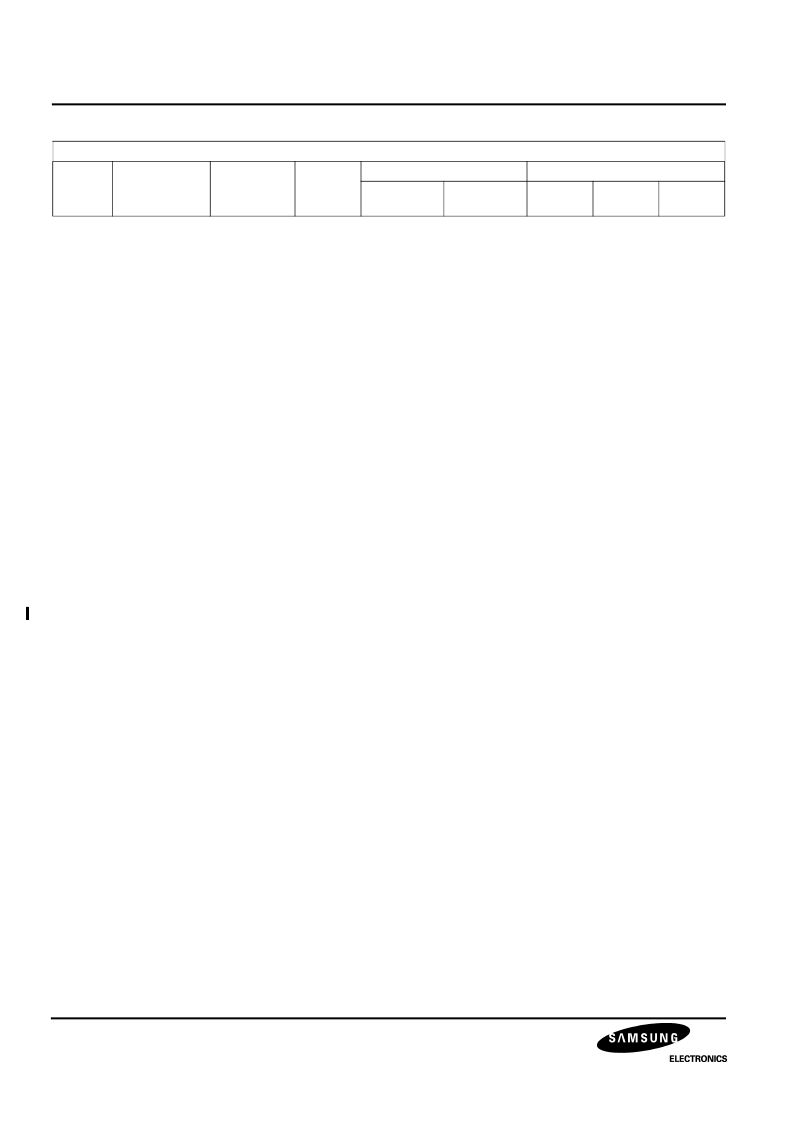- 您現(xiàn)在的位置:買賣IC網(wǎng) > PDF目錄368610 > S1D2511B01-A0 (SAMSUNG SEMICONDUCTOR CO. LTD.) DEFLECTION PROCESSOR FOR MULTISYNC MONITORS PDF資料下載
參數(shù)資料
| 型號(hào): | S1D2511B01-A0 |
| 廠商: | SAMSUNG SEMICONDUCTOR CO. LTD. |
| 英文描述: | DEFLECTION PROCESSOR FOR MULTISYNC MONITORS |
| 中文描述: | 偏轉(zhuǎn)處理器多同步監(jiān)測(cè)儀 |
| 文件頁(yè)數(shù): | 22/34頁(yè) |
| 文件大小: | 330K |
| 代理商: | S1D2511B01-A0 |
第1頁(yè)第2頁(yè)第3頁(yè)第4頁(yè)第5頁(yè)第6頁(yè)第7頁(yè)第8頁(yè)第9頁(yè)第10頁(yè)第11頁(yè)第12頁(yè)第13頁(yè)第14頁(yè)第15頁(yè)第16頁(yè)第17頁(yè)第18頁(yè)第19頁(yè)第20頁(yè)第21頁(yè)當(dāng)前第22頁(yè)第23頁(yè)第24頁(yè)第25頁(yè)第26頁(yè)第27頁(yè)第28頁(yè)第29頁(yè)第30頁(yè)第31頁(yè)第32頁(yè)第33頁(yè)第34頁(yè)

S1D2511B01 DEFLECTION PROCESSOR FOR MULTISYNC MONITORS
22
[ ] initlal value
OPERATING DESCRIPTION
GENERAL CONSIDERATIONS
Power Supply
The typical values of the power supply voltages Vcc and V
DD
are respectively 12V and 5V. Perfect operation is
obtained if Vcc and V
DD
are maintened in the limits: 10.8 to 13.2V and 4.5 to 5.5V.
In order to avoid erratic operation of the circuit during transient phase of Vcc switching on, or switching off, the
value of Vcc is monitored and the outputs of the circuit are inhibited if Vcc is less than 7.5V typically.
In the same manner, V
DD
is monitored and internal set-up is made until V
DD
reaches 4V (see I
2
C control table for
power on reset).
In order to have a very good power supply rejection, the circuit is internally powered by several internal voltage
references (the unigue typical value of which is 8V). Two of these voltage references are externally accessible, one
for the vertical part and on one for the horizontal one. If needed, these voltage references can be used (until Iload
is less than 5mA). Furthermore it is necessary to filter the a.m. voltage references by the use of external capacitor
connected to ground, in order to minimize the noise and consequently the
“
jitter
”
on vertical and horizontal output
signals.
I
2
C Control
KB2511 belongs to the I
2
C controlled device family, instead of being controlled by DC voltage on dedicated control
pins, each adjustment can be realized through the I
2
C interface. The I
2
C bus is a serial bus with a clock and a data
input. The general function and the bus protocol are specified in the philips-bus data sheets.
The interface (data and clock) is TTL-level compatible. The internal threshold level of the input comparator is 2.2V
(when V
DD
is 5V). Spikes of up to 500ns are filtered by an integrator and maximum clock speed is limited to
400kHz.
The data line (SDA) can be used in a bidirectional way that means in read-mode the IC clocks out a reply informa-
tion (1byte) to the micro-processor.
The bus protocol prescribes always a full-byte transmission. The first byte after the start condition is used to trans-
mit the IC-address (hexa 8C for write, 8D for read).
Write Mode
In write mode the second byte sent contains the subaddress of the selected function to adjust (or controls to affect)
and the third byte the corresponding data byte. It is possible to send more than one data byte to the IC. If after the
third byte no stop or start condition is detected, the circuit increments automatically the momentary subaddress in
the subaddress counter by one (auto-increment mode). So it is possible to transmit immediately the next data
bytes without sending the IC address or subaddress. It can be useful so as to reinitialize the whole controls very
quickly (flash manner). This procedure can be finished by a stop condition.
The circuit has 16 adjustment capabilities: 3 for horizontal part, 4 for vertical one, 2 for E/W correction, 2 for the
dynamic horizontal phase control, 1 for moire option, 3 for horizontal and vertical dynamic focus and 1 for B+
reference adjustment.
17 bits are also dedicated to several controls (ON/OFF, horizontal forced frequency, sync priority, detection
refresh and Xray reset).
READ MODE
00
Hlock
0, on
[1], no
Vlock
0, on
[1], no
Xray
1,on
[0],off
Polarity detection
Synchro detection
H/V pol
[1],negative
V pol
[1], negative
Vext det
[0],no det
H/V det
[0],no det
V det
[0], nodet
相關(guān)PDF資料 |
PDF描述 |
|---|---|
| S1D2511B01 | DEFLECTION PROCESSOR FOR MULTISYNC MONITORS |
| S1D2511B01-A0B0 | DEFLECTION PROCESSOR FOR MULTISYNC MONITORS |
| S1D2514X01 | SDR Cable Assembly; Connector Type A:micro D Ribbon Plug; Connector Type B:micro D Ribbon Plug; Cable Length:2m; No. of Contacts:26; Pitch Spacing:0.8mm RoHS Compliant: Yes |
| S1D2518X01 | DB25 RJ11,4 WIRE ONLY. FEMAL |
| S1L9226X | RF AMP & SERVO SIGNAL PROCESSOR |
相關(guān)代理商/技術(shù)參數(shù) |
參數(shù)描述 |
|---|---|
| S1D2511B01-A0B0 | 制造商:SAMSUNG 制造商全稱:Samsung semiconductor 功能描述:DEFLECTION PROCESSOR FOR MULTISYNC MONITORS |
| S1D2511C01-AO | 制造商:未知廠家 制造商全稱:未知廠家 功能描述:DEFLECTION PROCESSOR FOR MULTISYNC MONITORS |
| S1D2512X01 | 制造商:SAMSUNG 制造商全稱:Samsung semiconductor 功能描述:DEFLECTION PROCESSOR FOR MULTISYNC MONITORS |
| S1D2512X01-A0B0 | 制造商:SAMSUNG 制造商全稱:Samsung semiconductor 功能描述:DEFLECTION PROCESSOR FOR MULTISYNC MONITORS |
| S1D2514X01 | 制造商:SAMSUNG 制造商全稱:Samsung semiconductor 功能描述:S1D2514X01-D0B0 |
發(fā)布緊急采購(gòu),3分鐘左右您將得到回復(fù)。